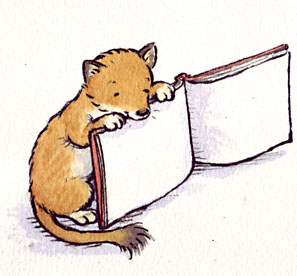![]()
Research tells us that all good young readers share the following characteristics:
Research also tells us that parents, preschool educators, reading tutors and others who work effectively with young children have demonstrated the following things:
Research also tells us that:
|
![]()
What do children need in their early learning lives?
The National Commission on Reading wrote in 1984 that "The single
most important activity for building the knowledge required for eventual
success in reading is reading aloud to children." Catherine Snow of Harvard says that "intentional, frequent, and sustained conversation among adults and children is a powerful predictor of language development and reading success...the amount of conversation children have with adults directly affects how well they develop thinking skills and build vocabulary." Picture book reading is important in the home and in child-care and community settings. J.C. Burgess and others have found it to be related to "language growth, emergent literacy and reading achievement including knowledge about print, letters and the characteristics of written language."
How do Mother Goose Programs meet those needs?
Download this evaluation summary.
• Mother Goose Programs for families promote frequent conversations about books and shared activities in the home.
In evaluating a national dissemination of these programs, researchers from WestEd found that over half the participants reported having "frequent" conversations about books, program activities or both.
• Mother Goose Programs actively involve children in conversation, stories and activities that promote expanded vocabulary and complex thinking.
RMC Research Corp. assessed how Mother Goose Programs improve programming for children in community and child care. They found: "MGP professional development materials and training approaches emphasize children's increasing abilities to attend to and understand conversations, stories, songs, and poems. There are activities with simple and multiple step directions. Increasingly complex and varied vocabulary is introduced through math and science activities."
• Mother Goose Programs help adults create reading experiences that give children all the reading building blocks.
Evaluations of family programs by WestEd show that the programs successfully promote book reading and that after the programs, 97% of participating parents or grandparents read books with their children. Programs for child-care and community settings gave adults a complex range of group reading skills. RMC Research found: "Child-care providers are given activities to help children develop increasing awareness of print and concepts of print, such as that reading in English moves from top to bottom and left to right, that speech can be written down, and that print conveys a message. Providers are encouraged to show children the relationship between spoken and written words by following print as it is read aloud, point to words, for example, as they are being read."
privacy policy terms of use about us contact us your account support us site map
